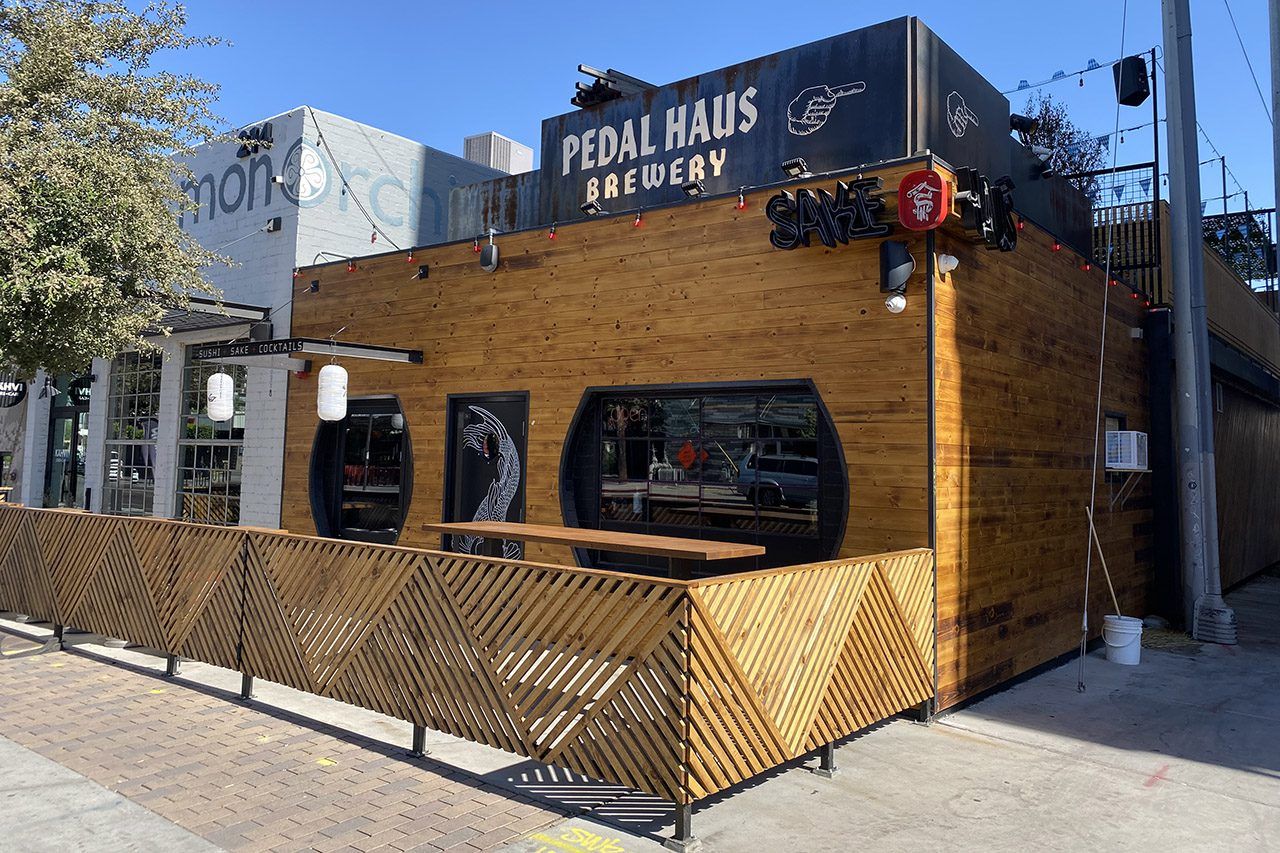LGBTQ+ Tour of DTPHX

June is LGBTQ+ Pride Month, which commemorates the Stonewall riots of 1969. Named for the Stonewall Inn, an LGBTQ+ club in Greenwich Village, a massive rebellion started after New York City police raided the club during the early hours of June 28, 1969. This ignited subsequent riots, protest, and marked the beginning of the LGBTQ+ civil rights movement.
Though not the first LGBTQ+ uprising, it was a tipping point in the United States. These events happened because the marginalized LGBTQ+ community was fed up with lifelong persecution and harassment. Arizona was not exempt. Throughout our history, the local LGBTQ+ community has been impacted by political persecutions, life-altering arrests, and the denial of basic civil rights.
As we continue our journey toward equality, and celebrate Pride, let’s take a look at a few Downtown Phoenix sites and events that are part of our LGBTQ+ history.
915 N. First Street – Eighth Day Coffee House

This empty lot was once the location of the Eighth Day Coffee House. Early on a Sunday morning in 1964, a dozen officers raided this LGBTQ+ social club arresting more than 20 people, with charges ranging from lewd and lascivious acts to drunk-and-disorderly conduct. Their names were printed in the newspaper, jobs were lost, families and careers were destroyed.
1011 N. Central Avenue – Cruisin’ Central

Cruisin’ Central opened its doors in 1977. The alley behind the building was the main entrance into the bar that attracted a diverse clientele.
Hip Historian Fun Fact: the Transgender Pride Flag was designed in Phoenix.

In 1999, Monica Helms designed the Transgender Pride Flag at her central Phoenix home near Indian School Road and Third Avenue. It has since been used and adopted around the globe.
Central and Portland Streets – Rainbow Crosswalk

Unveiled the summer of 2018, and one of two in Phoenix, the Rainbow Crosswalk effort was organized by Phoenix Pride and other LGBTQ+ non-profits. It highlights the history of Roosevelt as the first Phoenix gayborhood, and to this day, the neighborhood is home to One-N-Ten, Aunt Rita’s Foundation, the Parsons Center for Health and Wellness, Southwest Center and several other LGBTQ+ friendly organizations.
Third and Portland Streets – The Fruit Loop

A circuit encompassing Roosevelt, Third, Portland and First streets, “The Fruit Loop” was a popular place for men looking for male companionship, and was active from the mid-40s to the mid-90s.
307 E. Roosevelt Street – 307 Lounge

The 307 Lounge opened in the ‘40s, but a fire in the early ‘50s forced it to close and relocate down the street.
222 E. Roosevelt Street – 307 Lounge
The 307 name stuck through the decades and several owners. Look down at the plaque commemorating the 307 for being a watering hole on The Loop. The building was also famous for several DeGrazia murals, painted early in his career during the ‘50s. After the building was purchased for redevelopment, the DeGrazia Museum came from Tucson to preserve a small mural. Sadly it crumbled, and all were lost with the demolition of the building.
220 E. Roosevelt Street – The Dressing Room

The 307 was a small bar and lacked a dressing room. Beginning in the early ‘70s, it began hosting regular drag shows. The performers would use the space pictured as their dressing room, running through the alley, and bursting in the side door to perform.
A few entertainers still performing around town appeared on the 307 stage: Pussy Le Hoot, Barbara Seville and Celia Putty. At The Pemberton restaurant, retail and art collective just down the street, you’ll find a 20-foot tall dress form covered in 10,000 LED lights named “Tish.” It commemorates Tish Tanner, a larger-than-life drag performer at the 307.
125 W. Washington – Historic Maricopa County Courthouse and Old Phoenix City Hall

Same-sex marriage was legally recognized in Arizona on October 17, 2014. Decades prior, in 1975, at the historic Maricopa County Courthouse and Old Phoenix City Hall, a marriage license was issued to two men, Sam Burnett and Tony Secuya. The license immediately triggered a backlash. The response was Arizona House Bill 2024 (HB 2024) which was an attempt by conservative legislators to explicitly prohibit same-sex marriage.
Opposition to HB 2024 was spearheaded by the newly formed Gay People's Alliance, an LGBTQ+ advocacy group at the time. The Alliance mobilized community support and pushed back against the discriminatory legislation, marking one of Arizona’s early organized movements in defense of LGBTQ+ civil rights.
HB 2024 was killed in the Senate, the summer of 1975. Arizona enacted an explicit statutory ban on same-sex marriage in 1996, followed by a constitutional amendment (Proposition 102) approved by voters on November 4, 2008. Proposition 102 defined marriage strictly as a union between one man and one woman, reinforcing the earlier statutory ban.
845 N. 2nd Ave. – Historic Westminster Apartments

Despite rapid legal moves to block their union, Burnett and Secuya quickly conducted a private marriage ceremony in their apartment at the Historic Westminster Apartments. This action positioned them among the first same-sex couples to legally marry in the United States. The marriage would be voided, later by a judge.
*This story was originally published in June of 2020, and updated in March of 2025.
Looking for more historical fun?
Join Marshall Shore: Hip Historian on March 23, 2025 for a History and Mysteries of Downtown Phoenix Walking Tour. This guided tour will lead you into the shadows of history to unveil a darker side of Phoenix's past, venturing down alleys, through hidden doorways, and to past events that still haunt our city today.